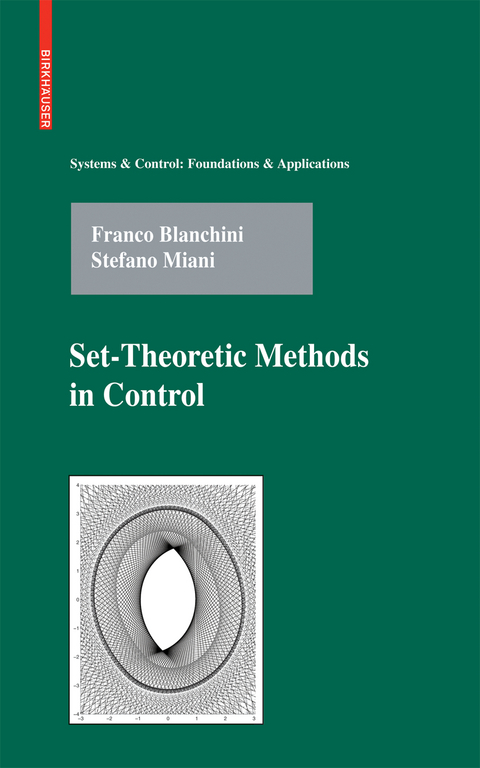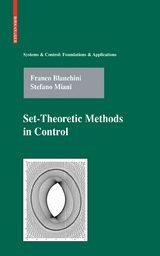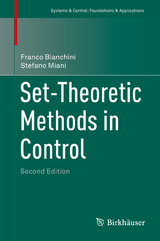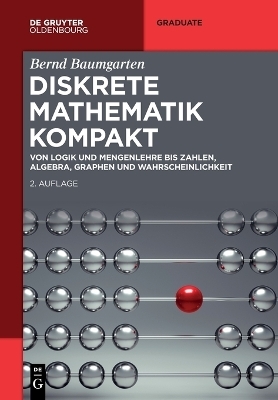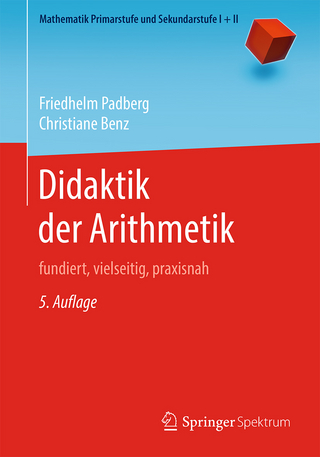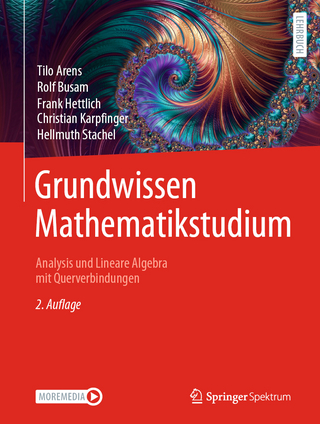Set-Theoretic Methods in Control
Seiten
2007
|
2008 ed.
Birkhauser Boston Inc (Verlag)
978-0-8176-3255-7 (ISBN)
Birkhauser Boston Inc (Verlag)
978-0-8176-3255-7 (ISBN)
Zu diesem Artikel existiert eine Nachauflage
Many control problems can be naturally formulated, analyzed, and solved in a set-theoretic context. The invariance property will be shown to be fundamental in dealing with problems such as saturating control, noise suppression, model-predictive control, and many others.
Many control problems can be naturally formulated, analyzed, and solved in a set-theoretic context. Sets appear naturally when three aspects, which are crucial in control systems design, are considered: constraints, uncertainties, anddesignspeci?cations.Furthermore,setsarethemostappropriatelanguage to specify severalsystem performances, for instance when we areinterested in determining the domain of attraction, in measuring the e?ect of a persistent noise in a feedback loop or in bounding the error of an estimation algorithm. From a conceptual point of view, the peculiarity of the material presented in this book lies in the fact that sets are not only terms of the formulation, but they play an active role in the solution of the problems as well. Generally speaking, in the control theory context, all the techniques which are theore- cally based on some properties of subsets of the state-space could be referred to as set-theoretic methods. The most popular and clear link is that with Lyapunov theory and positive invariance. Lyapunov functions are positi- de?nite energy-type functions of the state variables, which have the property of being decreasing in time and are fundamental tools to guarantee stability. Besides, their sublevel sets are positively invariant and thus their shape is quite meaningful to characterize the system dynamics, a key point which will be enlightened in the present book. The invariance property will be shown to be fundamental in dealing with problems such as saturating control, noise suppression, model-predictive control, and many others.
Many control problems can be naturally formulated, analyzed, and solved in a set-theoretic context. Sets appear naturally when three aspects, which are crucial in control systems design, are considered: constraints, uncertainties, anddesignspeci?cations.Furthermore,setsarethemostappropriatelanguage to specify severalsystem performances, for instance when we areinterested in determining the domain of attraction, in measuring the e?ect of a persistent noise in a feedback loop or in bounding the error of an estimation algorithm. From a conceptual point of view, the peculiarity of the material presented in this book lies in the fact that sets are not only terms of the formulation, but they play an active role in the solution of the problems as well. Generally speaking, in the control theory context, all the techniques which are theore- cally based on some properties of subsets of the state-space could be referred to as set-theoretic methods. The most popular and clear link is that with Lyapunov theory and positive invariance. Lyapunov functions are positi- de?nite energy-type functions of the state variables, which have the property of being decreasing in time and are fundamental tools to guarantee stability. Besides, their sublevel sets are positively invariant and thus their shape is quite meaningful to characterize the system dynamics, a key point which will be enlightened in the present book. The invariance property will be shown to be fundamental in dealing with problems such as saturating control, noise suppression, model-predictive control, and many others.
Lyapunov and Lyapunov-like functions.- Convex sets and their representation.- Invariant sets.- Dynamic programming.- Set-theoretic analysis of dynamic systems.- Control of parameter-varying systems.- Control with time-domain constraints.- (Sub-)Optimal control.- Set-theoretic estimation.- Related topics.
| Erscheint lt. Verlag | 15.11.2007 |
|---|---|
| Reihe/Serie | Systems & Control: Foundations & Applications |
| Zusatzinfo | XV, 487 p. |
| Verlagsort | Secaucus |
| Sprache | englisch |
| Maße | 155 x 235 mm |
| Themenwelt | Mathematik / Informatik ► Mathematik |
| Technik ► Elektrotechnik / Energietechnik | |
| ISBN-10 | 0-8176-3255-7 / 0817632557 |
| ISBN-13 | 978-0-8176-3255-7 / 9780817632557 |
| Zustand | Neuware |
| Haben Sie eine Frage zum Produkt? |
Mehr entdecken
aus dem Bereich
aus dem Bereich
Von Logik und Mengenlehre bis Zahlen, Algebra, Graphen und …
Buch | Softcover (2024)
De Gruyter Oldenbourg (Verlag)
74,95 €
fundiert, vielseitig, praxisnah
Buch | Softcover (2021)
Springer Berlin (Verlag)
32,99 €
Analysis und Lineare Algebra mit Querverbindungen
Buch | Hardcover (2022)
Springer Spektrum (Verlag)
64,99 €
